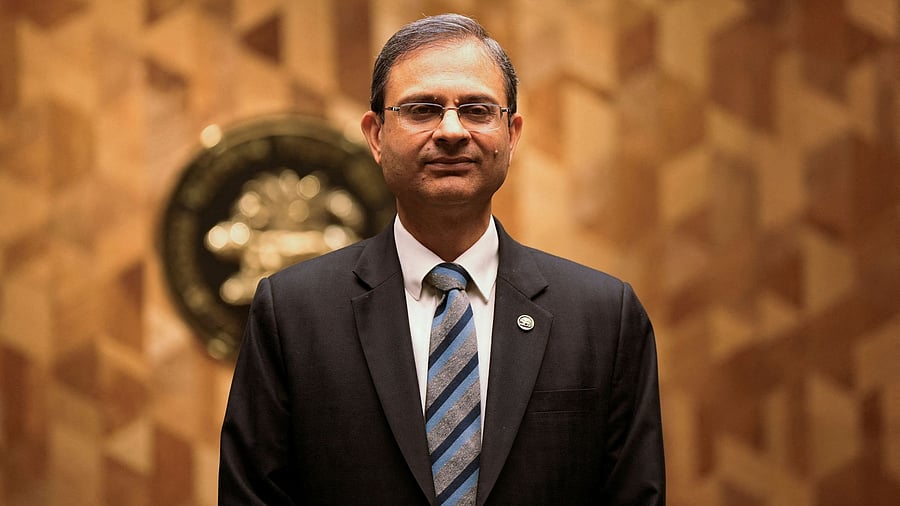
Reserve Bank of India Governor Sanjay Malhotra
Credit: Reuters File Photo
Mumbai: The Reserve Bank of India (RBI) on Wednesday cut policy interest rate by 25 basis points (0.25 per cent) amid signs of easing inflation but lowered its economic growth projections for 2025-26 to 6.5 per cent citing risks from global trade disruptions.
The six-member Monetary Policy Committee (MPC) unanimously decided to cut the repo rate from 6.25 per cent to 6 per cent. This is the second cut in the policy repo rate this year. Repo rate is the interest at which the central bank lends money to the commercial bank.
Other policy interest rates have also been lowered. The standing deposit facility (SDF) rate has been cut by 25 basis points to 5.75 per cent and the marginal standing facility (MSF) and the bank rate to 6.25 per cent from 6.5 per cent. These policy rates guide interest rates on lending and deposits by the commercial banks.
The RBI’s rate-setting panel also unanimously decided to change its policy stance from “neutral” to “accommodative”. This change in stance means in the upcoming bimonthly review, except in the situation of any economic shocks, the MPC would consider only two options – status quo or a rate cut.
Monetary policy stance is typically characterised as accommodative, neutral or tightening. While an accommodative stance entails easy monetary policy that is geared towards stimulating the economy through softer interest rates; tightening refers to contractionary monetary policy whereby interest rates are hiked to restrain spending and curb economic activity, all with the objective of reining in inflation.
A neutral stance is typically associated with a state of economy which neither calls for stimulating economic activity nor calls for controlling inflation by curtailing demand and provides flexibility to move in either direction on the basis of evolving economic conditions.
“The MPC noted that inflation is currently below the target, supported by a sharp fall in food inflation. Moreover, there is a decisive improvement in the inflation outlook. As per projections, there is now a greater confidence of a durable alignment of headline inflation with the target of 4 per cent over a 12-month horizon,” said RBI Governor Sanjay Malhotra.
“On the other hand, impeded by a challenging global environment, growth is still on a recovery path after an underwhelming performance in the first half of 2024-25. In such challenging global economic conditions, the benign inflation outlook and moderate growth demand that the MPC continues to support growth. Accordingly, the MPC unanimously voted to reduce the policy repo rate by 25 basis points to 6.0 per cent,” he added.
Analysts said the RBI’s policy stance indicates further rate cuts in the coming MPC meeting.
“The RBI Governor has clearly indicated the softening path of policy rates going forward as well, which we expect to move at least towards 5.5 per cent over the course of CY2025, along with continuation of liquidity infusion measures – all of which bode well for the continued downward trajectory of interest rates,” said Shriram Ramanathan, CIO, Fixed Income, HSBC Mutual Fund.
The RBI lowered its projection for India’s gross domestic product (GDP) growth for the current financial year to 6.5 per cent from its earlier estimate of 6.7 per cent. For April-June quarter the GDP growth has been pegged at 6.5 per cent. It is projected at 6.7 per cent in Q2; 6.6 per cent in Q3 and 6.3 per cent in the fourth quarter of 2025-26.
The central bank also lowered its projection on the headline retail inflation for the current financial year to 4 per cent from its earlier forecast of 4.2 per cent, assuming a normal monsoon. Consumer Price Index (CPI) based retail inflation is projected at 3.6 per cent with Q1; 3.9 per cent in Q2; 3.8 per cent in Q3 and 4.4 per cent in Q4 of the current financial year
"The RBI's decision to reduce the repo rate is significant for the economy amid ongoing tariff concerns and global headwinds. This timely action aims to relieve liquidity constraints and boost business confidence," said Anshuman Magazine, Chairman & CEO, India, Southeast Asia, Middle East & Africa, CBRE.
"The rate cut is expected to boost investor sentiment, improve financing conditions, and accelerate momentum in demand. Specifically, it is expected to make home loans more affordable and spur growth in the mid-range and affordable housing markets," Magazine added.
Confederation of Indian Industry (CII) Director General Chandrajit Banerjee underlined the need for further rate cuts saying the real interest rate, after adjusting with inflation, remained high despite the recent lowering in the policy repo rate.
“CII is of the view that RBI’s accommodative monetary policy combined with the government's growth-centric fiscal policy will help to boost domestic growth amidst global economic turmoil,” said Banerjee.